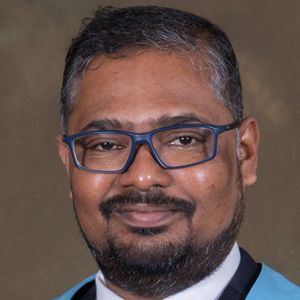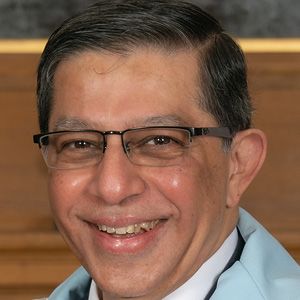

Lasitha B Samarakoon: Consultant General Surgeon, University Hospitals of Leicester NHS Trust

Majid Mukadam: Retrieval Surgeon and Transplant Specialist Heart and Lung Transplantation; RCSEd Council Member
The National Health Service was established in 1948 with the aim of providing the highest-quality healthcare services that are free for all at the point of delivery. It recently celebrated its 75th anniversary and largely has accomplished its mission. The challenges it has faced in recent times are enormous, with the workforce crisis the most urgent.
There is a shortage of consultants in secondary care. Although attempts have been made to increase the number of recruits for training programmes, these measures have fallen far short of the increasing demands and strains on the NHS.
With the restriction of work hours, as well as the impact of the COVID-19 pandemic, training had been adversely affected. This may further adversely affect the workforce crisis. Increasing the number of training places seems to run into a blind end by contributing to the backlog as the system is already saturated.
We feel the need to think out of the box rather than trying to apply a traditional ‘fix’ that would continue to stress resources. A possible solution is to expand the senior decision-making workforce and provide safe and high-quality patient care existing within the NHS, but this has been overlooked.
Specialty doctors, associate specialists and specialist (SAS) doctors comprise nearly 30% of the NHS workforce1. They are a diverse group of doctors with varying levels of experience and competencies. Senior SAS locally employed doctors (LEDs) are experienced, competent and have been working autonomously, but often their services have been undervalued and neglected. This subset of senior doctors could provide valuable support to consultants, as well as provide services independently.
The system may need to be tweaked to accommodate this group of doctors so their skills and expertise can be used to address current issues. A proportion of SAS LEDs even attempt a GMC-regulated alternative route to enter specialist registry known as the certificate of eligibility for specialist registration (CESR)2.
There has been criticism of this approach. In a recent Health and Social Care Committee report, the process was described as “lengthy and opaque”, “complex, difficult and expensive”, and in need of “regulatory reform” to make it “proportionate and streamlined” to “assist in ethical overseas recruitment”3.
This process can be streamlined and improved. It could potentially unlock a valuable alternative supply of a ready senior medical workforce to supplement the stream of trainees, without the additional investment of time and resources.
An alternative approach to encourage experienced SAS LEDs not wishing to take up responsibilities of consultancy is to promote the specialist contract4. This has replaced the older associate specialist contract, and incorporates autonomous practice and decision-making for more senior SAS doctors.
This contract could harness the skills and experience of more experienced SAS LEDs and retain them. More widespread use of this grade can lead to experienced SAS LEDs contributing to the senior medical workforce alongside the consultant workforce. The burden of clinical work as well as teaching and training requirements can be shared, leading to less pressure on the consultant body.
These measures will not resolve the crisis overnight, but we believe they could achieve a more sustainable workforce. It is crucial that we act now5.
|
References Find a full list of references click here. |
